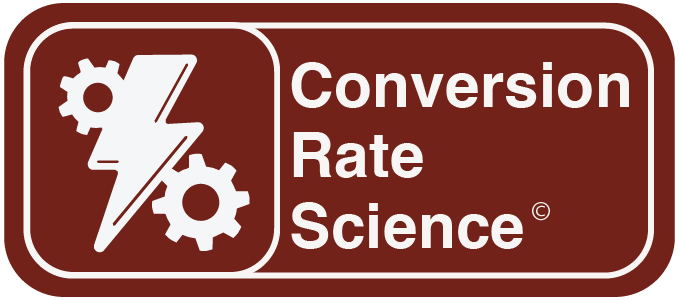What Is Lead Generation?
Lead generation is the process of attracting potential customers and nurturing their interest in your product or service to the point where they share their contact information. Whether through inbound or outbound efforts, generating quality leads is about building relationships that matter. But simply attracting leads isn’t enough—CRO teaches us that every lead must be optimized for conversion at each step of the funnel. It’s not just about filling your funnel but improving the quality of leads while decreasing friction along the way.
Why Is Lead Generation Critical for Business?
In today’s crowded market, standing out requires more than just great products; it requires intentional engagement with potential customers throughout the buyer’s journey. Lead generation enables you to:
- Capture attention early on and build trust.
- Identify qualified leads through careful nurturing and segmentation.
- Focus resources on high-probability conversions, driving long-term growth.
Building the Lead Generation Funnel
A lead generation funnel maps the journey a prospect takes from initial contact to becoming a customer. But simply visualizing a funnel isn’t enough. You must optimize every stage to increase the likelihood of conversion. Here’s a breakdown of each funnel stage:
Top of Funnel (TOFU): Attract and Educate
At this stage, your goal is to raise awareness and provide valuable, educational content to draw in a broad audience.CRO Tips:
- Use attention-grabbing headlines on your content that directly address your audience’s pain points.
- Optimize page load speed to prevent drop-offs—slow pages can kill your lead generation efforts.
- Test different lead magnets (like eBooks, webinars, etc.) to find out which offers generate the most sign-ups.
Middle of Funnel (MOFU): Engage and Nurture
Once visitors have entered the middle of the funnel, they’ve expressed interest in your product. Your goal is to nurture these leads by providing them with deeper content that addresses their specific needs.CRO Tips:
- Use segmented email marketing to target leads based on their behavior, offering more personalized content.
- A/B test form lengths on gated content to reduce friction and increase form completion rates.
- Implement retargeting ads to engage users who visited your site but didn’t convert initially.
Bottom of Funnel (BOFU): Convert and Close
At the bottom of the funnel, your leads are ready to make a purchasing decision. Your goal is to reassure them and remove any final barriers to conversion.CRO Tips:
- Create case studies and comparison charts to highlight the value of your product versus competitors.
- Optimize demo request forms to be short and frictionless.
- Use exit-intent popups offering a final incentive (e.g., a discount or free trial) to hesitant leads before they leave your site.
Optimizing Lead Generation Techniques
Here are some specific lead generation techniques you can implement with a CRO focus:1. Lead Capture Forms
The way you design your lead capture forms can make or break your conversion rates. From a CRO perspective, shorter is better, but there’s more to it.CRO Action:
- Test different form fields and lengths to find the balance between collecting necessary information and reducing friction.
- Add conditional logic to forms, asking only relevant questions based on the user’s previous answers, making it feel more personalized.
2. Popups and Slide-ins
When used correctly, popups can be a powerful lead generation tool. However, timing and design are crucial to their success.CRO Action:
- Implement exit-intent popups that appear when a user is about to leave the site, offering a lead magnet or discount.
- A/B test different copy and design elements to find the most compelling combination.
3. Social Proof
Adding social proof to your lead generation pages (e.g., testimonials, case studies, reviews) can increase trust and, by extension, conversions.CRO Action:
- Place trust signals (e.g., customer reviews, awards, media mentions) near lead capture forms to ease concerns about providing personal information.
Exercise: Practice Lead Generation Optimization
Here’s a practical exercise to help you apply these CRO principles to your lead generation efforts:- Choose a Lead Generation Page: Start by selecting a landing page or blog post that serves as a lead generator.
- Set Up a Heatmap Tool: Use a tool like Hotjar to analyze how users are interacting with your page.
- A/B Test a Form or CTA: Create a variation of your lead capture form or CTA and run a test for one week. Analyze the results to see which version converts more effectively.
- Add Social Proof: If your page doesn’t have social proof, add testimonials or case studies to the page and see how this affects conversion rates.
Conclusion: Elevate Your Lead Generation with CRO
Lead generation is the backbone of your business’s growth, but it’s not enough to generate leads—you need to optimize every step of the journey to turn leads into customers. By applying CRO principles to your lead generation strategy, you can improve the quality of your leads, shorten the sales cycle, and ultimately drive higher conversion rates.Now that you know the basics of lead generation and how to optimize it for conversions, it’s time to start testing and refining your approach. Remember, lead generation is a continuous process of learning and improvement—there’s always a new opportunity to boost your performance.
Learn More About CRO
How Should I Proritize My AB Test Ideas?
Conversion Rate Optimization (CRO) is a game of strategy. With countless opportunities to test and...
How to Calculate Incremental Revenue from an A/B Test: A Comprehensive Guide
Introduction Calculating estimated incremental revenue from an A/B test is essential for...
Master the Customer Journey Map: Your Path to Better Conversions
Have you ever tried to take a trip without a map? Navigating the world of websites can feel the...
